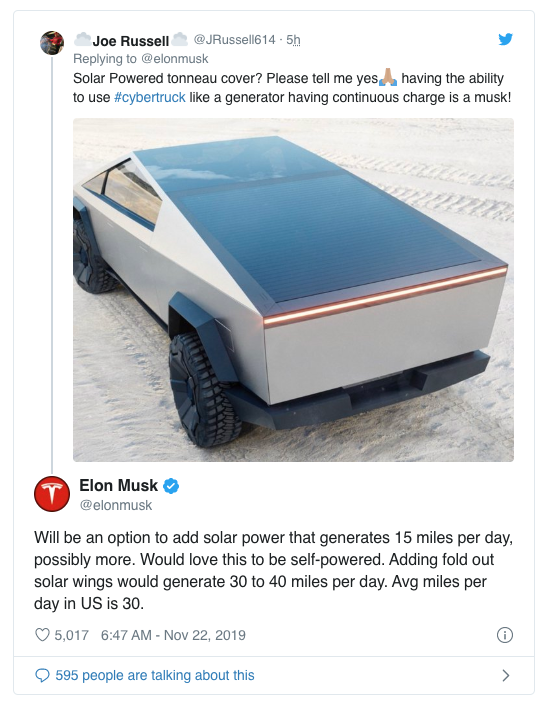Technology
More than 12,000 attendees gathered this week in San Diego to discuss all things containers, Kubernetes and cloud-native at KubeCon.
Kubernetes, the container orchestration tool, turned five this year, and the technology appears to be reaching a maturity phase where it accelerates beyond early adopters to reach a more mainstream group of larger business users.
Thatnot to say that there isn&t plenty of work to be done, or that most enterprise companies have completely bought in, but itclearly reached a point where containerization is on the table. If you think about it, the whole cloud-native ethos makes sense for the current state of computing and how large companies tend to operate.
If this weekconference showed us anything, itan acknowledgment that ita multi-cloud, hybrid world. That means most companies are working with multiple public cloud vendors, while managing a hybrid environment that includes those vendors — as well as existing legacy tools that are probably still on-premises — and they want a single way to manage all of this.
The promise of Kubernetes and cloud-native technologies, in general, is that it gives these companies a way to thread this particular needle, or at least thatthe theory.
Kubernetes to the rescue

Photo: Ron Miller/TechCrunch
If you were to look at the Kubernetes hype cycle, we are probably right about at the peak where many think Kubernetes can solve every computing problem they might have. Thatprobably asking too much, but cloud-native approaches have a lot of promise.
Craig McLuckie, VP of R-D for cloud-native apps at VMware, was one of the original developers of Kubernetes at Google in 2014. VMware thought enough of the importance of cloud-native technologies that it bought his former company, Heptio, for $550 million last year.
As we head into this phase of pushing Kubernetes and related tech into larger companies, McLuckie acknowledges it creates a set of new challenges. &We are at this crossing the chasm moment where you look at the way the world is — and you look at the opportunity of what the world might become — and a big part of what motivated me to join VMware is that itsuccessfully proven its ability to help enterprise organizations navigate their way through these disruptive changes,& McLuckie told TechCrunch.
He says that Kubernetes does actually solve this fundamental management problem companies face in this multi-cloud, hybrid world. &At the end of the day, Kubernetes is an abstraction. Itjust a way of organizing your infrastructure and making it accessible to the people that need to consume it.
&And I think ita fundamentally better abstraction than we have access to today. It has some very nice properties. It is pretty consistent in every environment that you might want to operate, so it really makes your on-prem software feel like itoperating in the public cloud,& he explained.
Simplifying a complex world
One of the reasons Kubernetes and cloud-native technologies are gaining in popularity is because the technology allows companies to think about hardware differently. There is a big difference between virtual machines and containers, says Joe Fernandes, VP of product for Red Hat cloud platform.
&Sometimes people conflate containers as another form of virtualization, but with virtualization, you&re virtualizing hardware, and the virtual machines that you&re creating are like an actual machine with its own operating system. With containers, you&re virtualizing the process,& he said.
He said that this means itnot coupled with the hardware. The only thing it needs to worry about is making sure it can run Linux, and Linux runs everywhere, which explains how containers make it easier to manage across different types of infrastructure. &Itmore efficient, more affordable, and ultimately, cloud-native allows folks to drive more automation,& he said.
Bringing it into the enterprise

Photo: Ron Miller/TechCrunch
Itone thing to convince early adopters to change the way they work, but as this technology enters the mainstream. Gabe Monroy, partner program manager at Microsoft says to carry this technology to the next level, we have to change the way we talk about it.
- Details
- Category: Technology
Read more: Making sense of a multi-cloud, hybrid world at KubeCon
Write comment (100 Comments)The benefits of machine translation are easy to see and experience for ourselves, but those practical applications are only one part of what makes the technology valuable. Microsoft and the government of New Zealand are demonstrating the potential of translation tech to help preserve and hopefully breathe new life into the Māori language.
Te reo Māori, as it is called in full, is of course the language of New Zealandlargest indigenous community. But as is common elsewhere as well, the tongue has fallen into obscurity as generations of Māori have assimilated into the dominant culture of their colonizers.
Māori people make up about 15% of the population, and only a quarter of them speak the language, making for a grand total of 3% that speak te reo Māori. The country is hoping to reverse the trend by pushing Māori language education broadly and taking steps to keep it relevant.
Microsoft and New ZealandTe Taura Whiri i te Reo Māori, or Māori Language Commission, have been working together for years to make sure that the companysoftware is inclusive of this vanishing language. The latest event in that partnership is the inclusion of Māori into MicrosoftTranslator service, meaning it can now be automatically translated into any of the other 60 supported languages, and vice versa.

Thata strong force for inclusion and education, of course, as automatic translation tools are a great way to engage with content, check work, explore previously untranslated documents, and so on.
Creating an accurate translation model is difficult for any language, and the key is generally to have a large corpus of documents to compare. So a necessary part of the development, and certainly something the Commission helped with, was putting together that corpus and doing the necessary quality checks to make sure translations were correct. With few speakers of the language, this would be a more difficult process than, say, creating a French-German translator.
One of the speakers who helped, Te Taka Keegan from the University of Waikato, said (from this Microsoft blog post):
The development of this Māori language tool would not have been possible without many people working towards a common goal over many years. We hope our work doesn&t simply help revitalize and normalize te reo Māori for future generations of New Zealanders, but enables it to be shared, learned and valued around the world. Itvery important for me that the technology we use reflects and reinforces our cultural heritage, and language is the heart of that.
Languages are dying out left and right, and although we can&t prevent that entirely, we can use technology to help make sure that they are both recorded and capable of being used alongside the dwindling number of active languages.
The Māori translation program is part of MicrosoftAI for Cultural Heritage program.
- Details
- Category: Technology
Read more: Microsoft adds Māori to translator as New Zealand pushes to revitalize the language
Write comment (93 Comments)
We&ve aggregated many of the worldbest growth marketers into one community. Twice a month, we ask them to share their most effective growth tactics, and we compile them into this Growth Report.
This is how you stay up-to-date on growth marketing tactics — with advice thathard to find elsewhere.
Our community consists of 1,000 startup founders and VPof growth from later-stage companies. We have 400 YC founders, plus senior marketers from companies including Medium, Docker, Invision, Intuit, Pinterest, Discord, Webflow, Lambda School, Perfect Keto, Typeform, Modern Fertility, Segment, Udemy, Puma, Cameo and Ritual .
You can participate in our community by joining Demand Curvemarketing webinars, Slack group, or marketing training program.
Without further ado, onto our communityadvice.
Advertising in Discord/Telegram communities
Insights from Varun Mathure of Midnite
Discord/Telegram can be a great place to find engaged, niche communities for advertising. However, do not treat it like a typical ad channel. Community marketing is its own art, and there are many principles to doing it effectively. Here are just a few:
- Treat Discord/Telegram users like you would Reddit users: they&ll reject being advertised to unless therelegitimate, authentic value being provided.
- Work with moderators to offer services that make their moderation duties easier. Perhaps a bot or tool that would be legitimately useful to the community while also organically pitching your startup.
- Have a well-respected community member vouch for you — it goes a long way toward building trust with the rest of the community. Always start by building relationships.
- Have a member of your team active in the community. Don&t just advertise; contribute regularly.
- Run promos/incentives that encourage members to post your product screenshots or share your product output in the community. In other words, incentivize a frictionless way for community members to become your brand ambassadors.
Landing page tear-downs [Video]
Watch us critique landing pages. In the process, you&ll learn how to improve your own.
Most common direct mail mistakes
- Details
- Category: Technology
Read more: Direct mail still works if you avoid common mistakes
Write comment (100 Comments)Tesla revealed its Cybertruck pickup last night,a SciFi-tastic wedge built from the same steel alloy that SpaceX is using for its Starship spaceship.
Elon Musk spent about 20 minutes showing off the truck, with demos ranging from a game of tug-of-war against an F-150, to racing a Porsche, to a window strength test that didn&t go quite as planned.
This morning, Elon is trickling out other details he didn&t get around to mentioning onstage — like that they&re planning to offer a solar charging option.
While it sounds like Tesla is still working out the exact details, Elon shed some light on the solar option via tweet:

The Cybertrucklong, angled sides seem like they&d lend themselves well to doubling as solar panels — the whole cover of the &Vault& truck bed is effectively one big flat surface, after all. Even so, don&t go expecting a solar charging Cybertruck to get all of its power from the sun; solar panels just aren&t that efficient. Musk suggests that their current design could generate about 15 miles of charge per day, while conceptual &fold out solar wings& could potentially pull in 30-40 miles per day. Enough to get you around town, but you&ll still probably need to juice up the standard way for long hauls. But hey, that15+ miles pulled from the sun!
(It also totally lends itself to the wildly post-apocalyptic look/feel of the Cybertruck. No grid? No problem. SEEYA LATER, ROBOCOP.)
There are still plenty of things to be worked out — how much the option could cost, what those &solar wings& might look like, whether it&ll be ready at launch, etc. With Cybertruck not expected to go into production until late 2021, though, they&ve got time to figure all that out.
- Details
- Category: Technology
Read more: Tesla’s Cybertruck will have a solar charging option, says Musk
Write comment (96 Comments)The Daily Crunch is TechCrunchroundup of our biggest and most important stories. If you&d like to get this delivered to your inbox every day at around 9am Pacific, you can subscribe here.
1. Behold, the Tesla Cybertruck is here
Elon Musk has unveiled a vehicle that looks like it was ripped straight out of a post-apocalyptic science fiction movie.
The Tesla Cybertruck is made of cold-rolled steel, armored glass (which cracked in one demonstration at yesterdayevent) and adaptive air suspension. The cheapest version — a single-motor and rear-wheel drive model — will cost $39,900.
2. Twitter will finally let you turn on two-factor authentication without giving it a phone number
After countless tales of people having their phone numbers and inbound messages hijacked by way of SIM swapping, itclear that SMS just isn&t the right solution for sending people secondary login codes. And yet for many years, itbeen the mandatory go-to on Twitter — you could switch to another option later, but you had to give Twitter a phone number to turn it on in the first place.
3. Y Combinator abruptly shutters YC China
Startup accelerator Y Combinator has abandoned plans to establish a branch in China. The company cites a general change in strategy, but the firmsilence on the complexity and controversy of working with China right now suggests theremore at play.
4. Hyundai and Seoul set to test self-driving cars on city roads starting next month
Seoul will provide smart infrastructure to communicate with the vehicles, including connected traffic signals, and will also relay traffic and other info as frequently as every 0.1 seconds to the Hyundai vehicles.
5. AlphabetX details a garbage-sorting bot thatpart of its plan to make robots an everyday thing
X — formerly Google X — focuses exclusively on ambitious &moonshots,& a.k.a. tech you&d expect to find in science fiction (arecurring theme in todaynewsletter), not a real product in development. For example: A robot that can sort through office trash.
6. OutVoice officially launches its freelancer payment tools
The startup, which allows editors to pay freelance writers and photographers with the push of a button, has also raised seed funding from content monetization startup Coil.
7. Morgan Stanley‘Teflon banker& talks direct listings and much more
Michael Grimes, a banker for 32 years — 25 of them with Morgan Stanley — has played a role in the IPOs of Salesforce, LinkedIn, Workday and hundreds of other companies. In an interview, Grimes told us why he supports direct listings. (Extra Crunch membership required.)

- Details
- Category: Technology
Read more: Daily Crunch: Tesla unveils its futuristic Cybertruck
Write comment (95 Comments)
This week, we reported on TechCrunch how thousands of remote employees with health and workplace benefits through human resources giant TriNet received emails that looked like a near-perfect phishing attempt.
One recipient was so skeptical, they shared the email with TechCrunch so we could verify its authenticity. The message checked every suspicious box. In fact, when, we asked two independent security researchers to offer their assessments, each one thought it was a phishing email devised to steal usernames and passwords.
The fact that there was confusion to begin with shows that even gigantic companies like TriNet — a $3.7 billion corporation — are not doing enough to prevent phishing attacks. Had they proactively employed basic email security techniques, it would have been a lot easier to detect that the email was not in fact a phish, but a genuine company email.
But this problem isn&t unique to TriNet; itnot even unique to big companies.
Last year, security firm Agari found only 14% of all Fortune 500 companies were using DMARC, a domain security feature that prevents email spoofing and actively enforces it. New data supplied by Agari to TechCrunch shows that figure has risen only one percentage point in the last year, bringing it to a meager 15%.
Phishing and impersonation are fundamentally human problems. The aim is to try to trick unsuspecting victims into turning over their usernames, email addresses and passwords to hackers who then log in and steal data or money. In some cases, scammers use an email impersonation scam to trick employees into thinking someone senior in the company needs certain sensitive files like banking information or employee tax documents.
- Details
- Category: Technology
Read more: Startups face the same phishing risks as big corporations
Write comment (90 Comments)Page 282 of 5614

 14
14